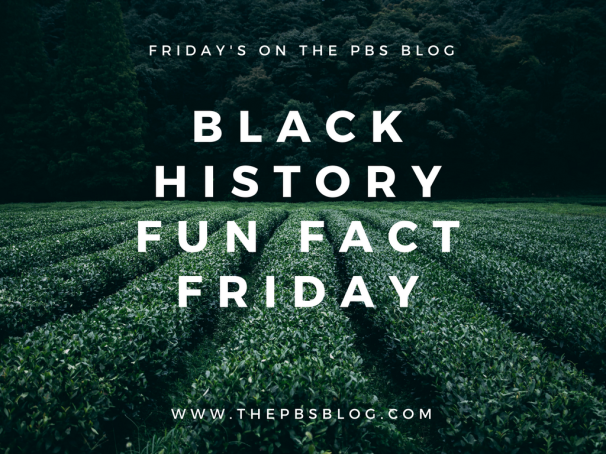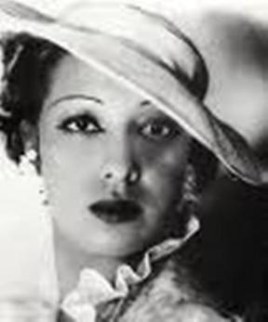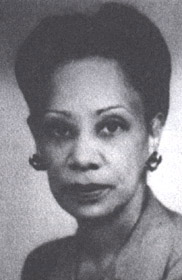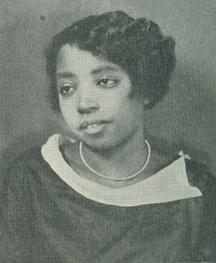
If you’re anything like me, you get tired of the same repeated history. Martin Luther King Jr., Rosa Parks, Frederick Douglass, Harriet Tubman, Langston Hughes, and Zora Neale Hurston. These are names to which we are exceptionally familiar. They were great but we know them. Let’s talk about something else.
Admittedly, I didn’t have a lot of time on my hands this week so I decided to compile a list of women who took part in The Harlem Renaissance to which we aren’t too familiar for this week’s fun fact. Enjoy.
Dorothy West

The daughter of a freed slave, the only child of Isaac and Rachel West, Dorothy West’s father built a fruit and vegetable business that provided the family a more affluent life among Boston’s middle class. Nicknamed “The Kid” by Langston Hughes and sharing an apartment with Zora Neale Hurston, Dorothy West was a young member of the Harlem Renaissance. Not yet 20 in 1926 when her short story ”The Typewriter” won a prize from the Urban League’s Opportunity magazine, Dorothy moved to Harlem and joined the poets, novelists, musicians and other artists.
Alice Moore Dunbar-Nelson

When I first came across Alice I kept trying to figure out what was so familiar about her name. It wasn’t until I researched her that it became apparent. She was once married to Paul Lawrence Dunbar before they separated in 1902. Alice Moore Dunbar-Nelson was born in New Orleans, Louisiana, to mixed-race parents. Documented as African American, Anglo, Native American, and Creole, her works cover the complex subjects of race, ethnicity, and oppression. Her first book, Violets and Other Tales (1895), was published when she was just 20. A writer of short stories, essays, and poems, Dunbar-Nelson was one of the few black female diarists of the early 20th century.
Clarissa Scott Delany

Clarissa looks as if she was fly back in the day lol.
Born in 1901 in Tuskegee, Alabama Delany is most known for her powerful poem “The Mask”. Dying at an early age (26) she did not contribute many works but still contributed by publishing poetry and journal articles into the newspaper Opportunity. After her young years in Alabama, she was sent to New England where she graduated from Wellesley College in 1923. During Delany’s years at Wellesley, she attended meetings of the Boston Literary Guild. Speakers were featured each week. Delany started writing and gained the attention and became associated with the Harlem Renaissance.
May Miller

“To read across May Miller’s life is to read across the history of 20th century America.”
– Myra Sklarew
It begins with May’s father, Kelly Miller. Born a year before Emancipation he was the first African American to attend John Hopkins University and among the first blacks to learn to read in public schools. He studied mathematics, physics, and astronomy. His daughter, May Miller was the most widely published playwright of The Harlem Renaissance. Myra writes how May often told about having to give up her childhood room for visits by W.E.B. Du Bois, author of The Souls of Black Folk, and the poet Paul Laurence Dunbar. She spoke of visits by Booker T. Washington, Carter G. Woodson, and Alain Locke.
Maria Bonner

One of four children, Marita Bonner was born in Boston to Joseph Andrew and Mary Anne Bonner. She was raised and educated in Boston, attending Brookline School, where she received musical training and in 1918 she entered Radcliffe College, concentrating in English and comparative literature. In Washington Bonner became closely associated with poet, playwright, and composer Georgia Douglass Johnson, whose “S” Street salon was an important gathering place for many of the writers and artists associated with the New Negro Renaissance of the 1920s better known as The Harlem Renaissance: Langston Hughes, Countee Cullen, Jessie Fauset, May Miller, Alain Locke, Jean Toomer, Willis Richardson, and others. She also began to publish her writing in journals like The Crisis of the NAACP and Opportunity, the official journal of the Urban League. Her first published pieces, “Hands” and “On Being Young-a Woman-and Colored,” appeared in The Crisis in 1925.
Yecheilyah Ysrayl is the YA, Historical Fiction author of eight books most notably, The Stella Trilogy, Blogger, and Poet. She is currently working on her next book series “The Nora White Story” about a young black woman writer who dreams of taking part in The Harlem Renaissance movement and her parents struggle to accept their traumatic past in the Jim Crow south. “Renaissance: The Nora White Story (Book One)” is due for release July 15-16, 2017. For updates on this project, sneak peeks of other projects, nuggets and tidbits, video tutorials, writing inspiration, and more, be sure to follow this blog and to subscribe to Yecheilyah’s email list HERE.

Holy Moly. These were s.m.a.r.t. women. Bravo. Thank you for sharing. I enjoy reading about trailblazers. Wow. 🙂
LikeLiked by 2 people
Me too 🙂
LikeLiked by 1 person
Reblogged this on Don Massenzio's Blog and commented:
Read about these important women in history courtesy of Yecheilyah Ysrayl’s blog
LikeLiked by 2 people
Thanks for sharing. The ladies are winking at you now 😉 lol
LikeLiked by 2 people
You’re welcome and I’m blushing accordingly
LikeLiked by 1 person
Lolll
LikeLiked by 1 person
Reblogged this on ichbinmeisterin and commented:
Awesome women of the Harlem Renaissance!
LikeLiked by 2 people
Thanks for sharing.
LikeLike
Thanks for posting, Yecheilyah! As a black girl in Britain, I was very disenfranchised from Black Diaspora History for much of my school years. The Harlem Renaissance was one of the first subjects I decided to study at the age of sixteen (almost six years ago, now), and it remains a solid favourite. And I absolutely agree with you; there is a definite stereotyping when it comes to African-American history, with the likes of King and Parks being seen as isolated figures, rather than vehicles of a larger movement for justice. For example, people think that Parks staged the first act of resistance against bus segregation rules, or that King invented the Civil Rights Movement, or that Tubman invented the Underground Railroad. People think that African-American history was just comprised of slavery, Jim Crow, the Civil Rights Movement and that’s it. This shows an abysmal lack of understanding of the complexity, diversity and plurality of movements and periods within black American history. Out of all the major events in African-American history, the Harlem Renaissance stands out in the top ten, because it represents the power of the mind against racism and poverty. The Great Migration was supposed to bring African-Americans to greater opportunity, but instead it just led from rural poverty to urban poverty, yet this period produced some of the greatest heights of black cultural and philosophical creativity. My favourite Harlem Renaissance woman is Meta Vaux Warrick Fuller, the incredible sculptor whose works have a real depth and power.
I really wanted the main character for one of my upcoming novels to be from Harlem, and I’m going to be using a lot of quotes from Langston Hughes’ stunning poetry throughout.
LikeLiked by 1 person
You’re right. “The Great Migration was supposed to bring African-Americans to greater opportunity, but instead it just led from rural poverty to urban poverty”. Truth.
LikeLiked by 1 person